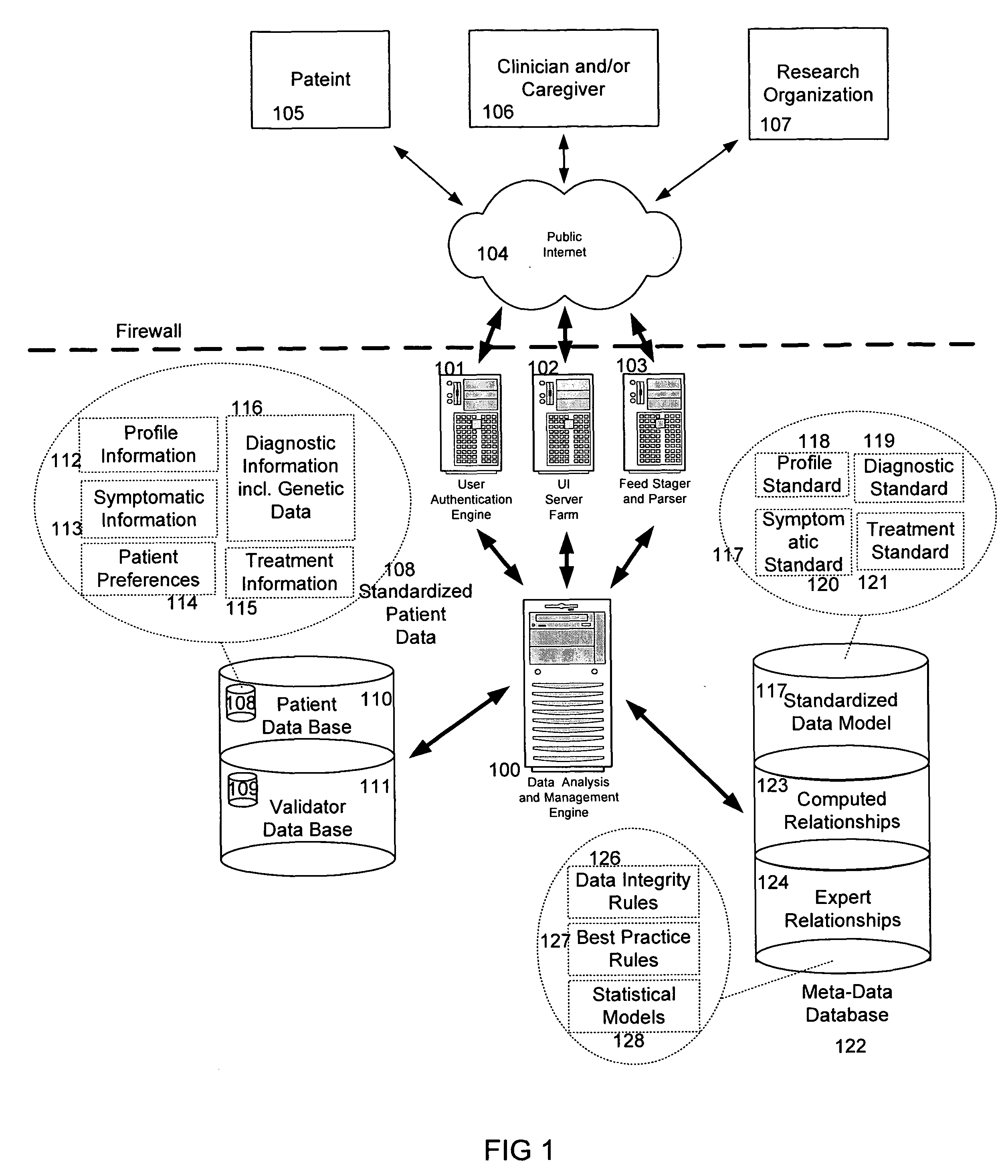System and method for improving clinical decisions by aggregating, validating and analysing genetic and phenotypic data
a genetic and phenotypic data and system technology, applied in the field of clinical information analysis, can solve the problems of increasing the difficulty of sharing information within the biomedical community, and increasing the difficulty of clinical decision making
- Summary
- Abstract
- Description
- Claims
- Application Information
AI Technical Summary
Benefits of technology
Problems solved by technology
Method used
Image
Examples
Embodiment Construction
Functional Overview of the System
Description of System Functionality
[0027]Assume in this discussion that the subjects are human patients in a clinical setting. A primary goal of the disclosed system is to enable clinicians to make better, faster, decisions using aggregated genetic and phenotypic data. In order to accomplish this, a secondary goal must be achieved, namely to enable research organizations to integrate and validate genetic and phenotypic data from multiple heterogeneous data sources. In a preferred embodiment, these two objectives are achieved with a system that has the following functionality: i) genetic, clinical and laboratory data are integrated into a standardized data model; ii) the integrity of information input into the data model is validated by a set of expert-rule based relationships and statistical relationships created between the data classes of the data model; iii) when data fails validation, the system facilitates remote upgrading of the data by data ma...
PUM
| Property | Measurement | Unit |
|---|---|---|
| shrinkage | aaaaa | aaaaa |
| shrinkage functions | aaaaa | aaaaa |
| shrinkage function | aaaaa | aaaaa |
Abstract
Description
Claims
Application Information
 Login to View More
Login to View More - R&D
- Intellectual Property
- Life Sciences
- Materials
- Tech Scout
- Unparalleled Data Quality
- Higher Quality Content
- 60% Fewer Hallucinations
Browse by: Latest US Patents, China's latest patents, Technical Efficacy Thesaurus, Application Domain, Technology Topic, Popular Technical Reports.
© 2025 PatSnap. All rights reserved.Legal|Privacy policy|Modern Slavery Act Transparency Statement|Sitemap|About US| Contact US: help@patsnap.com



